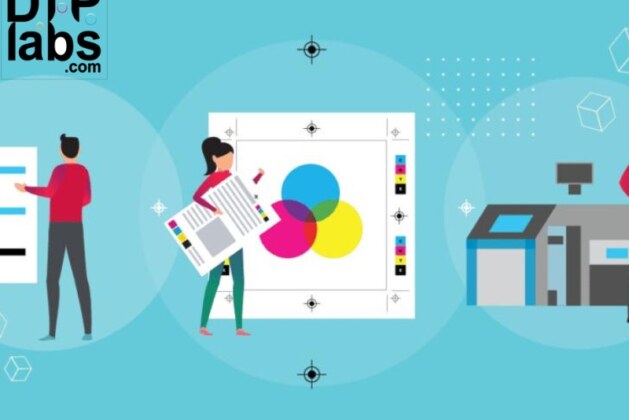Introduction
Prepress and typesetting are two essential steps in the printing industry’s ever-changing landscape that are vital to the realization of a piece of content on paper. Although these names might not mean the same thing to an outsider, they refer to different stages in the complex process of turning digital files into physical, printed items. Gaining knowledge of the complexities of Prepress and Typesetting can be a daunting task for individuals who are new to the world of professional printing. Though they have different functions to play within the larger pre-printing process, both terms are essential in turning manuscripts into polished, print-ready masterpieces.
Understanding Prepress
Prepress, the initial stage of printing, is similar to the setup done behind the scenes before a major play. It entails a set of actions to guarantee that the digital files are prepared for excellent printing.
Getting the File Ready:
After receiving digital files from editors and designers, prepress professionals carefully review them for errors such as missing typefaces, low-resolution photos, and inconsistencies. They provide a smooth transition to the printing stage by ensuring the files meet specific printing requirements, such as color profiles, bleed markings, and trim lines.
Prepress begins with meticulous file preparation. Designers and prepress technicians scrutinize digital files to ensure they meet the required specifications for printing.
Aspects like resolution, color modes, and file formats are scrutinized to avoid any discrepancies that could lead to poor print quality.
Color Management:
It takes a delicate dance to reproduce color accurately and consistently across a range of printing mediums. To ensure accurate and vibrant color reproduction in the finished output, prepress specialists calibrate equipment and use color management software to match the intended colors with the printer’s capabilities.
Another crucial facet of prepress is color correction. This involves adjusting and fine-tuning colors to ensure consistency across different printing materials.
Calibration of color profiles is performed to match the printer’s specifications, ensuring that the final printed product reflects the intended colors accurately.
Font Management:
To avoid any font substitution difficulties that could skew the overall message and visual attractiveness of the page, prepress professionals make sure all fonts used are embedded or converted to outlines.
Imposition:
This intriguing process involves refining the workflow of the printing press, maximizing paper usage, and organizing individual pages onto massive printing sheets in a specified order. Picture a puzzle where page layouts need to be arranged carefully so that they print and fold into the finished result effectively.
Imposition is the arrangement of pages in a specific order to facilitate the printing process. It ensures that when the printed sheets are folded and bound, the pages appear in the correct sequence.
This step plays a vital role in optimizing the efficiency of the printing press and minimizing paper waste.
Proofing:
Prepress experts create both physical and digital proofs, which are electronic copies of the finished printed item. Before going to full-scale printing, editors, designers, and clients carefully review these proofs to find and fix any mistakes or inconsistencies.
Before the actual printing commences, a proof – a sample of the final product – is created for careful review. This allows stakeholders to identify any potential issues and make necessary adjustments.
The proofing stage acts as a safeguard against errors and ensures that the final print aligns with the client’s expectations.
Understanding Typesetting
In contrast, typesetting is a more concentrated and specialized step in the printing process. Its main focus is on text formatting and arrangement to produce a style that is both understandable and aesthetically pleasing. Typesetting is particularly concerned with the attractive presentation of textual material, whereas prepress covers a wider range of tasks. Typesetting is the expert violinist in the prepress orchestra, painstakingly assembling the text’s visual presentation. This kind of art entails:
Font Selection and Formatting:
The choice of proper fonts is one of the basic elements of typesetting. This entails selecting typefaces that complement the written content and the overall style of the design. Selecting the ideal typeface affects readability, brand identification, and the tone of the printed text in addition to appearance.
Text Formatting:
Typesetters determine font size, line spacing, margins, and justification, ensuring the text flows harmoniously across pages. They meticulously adjust the spacing between characters and words to achieve optimal legibility and visual balance.
Column and Page Layout:
Typesetters are responsible for organizing content on a page in the most efficient manner. This procedure includes selecting the right image positioning, margins, and other visual elements. The goal is to create a balanced and harmonic layout that lets the reader’s eye naturally move across the content.
Formatting for the Headline and Subheading:
These components lead readers through the text like signposts do. By employing font size, weight, and placement to establish a clear hierarchy and enable simple navigation and comprehension, typesetters guarantee that headlines and subheadings are visually distinguishable.
Hyphenation and Alignment:
Alignment describes how text is positioned on a page, with options including justified, left, and right. Typesetters expertly control alignment to produce a structure that is aesthetically beautiful. Hyphenation is the process of dividing words into lines in order to avoid awkward gaps and preserve uniform spacing.
Combining Visual Components:
Text handling is only one aspect of typesetting. It involves the deliberate incorporation of visual components like pictures, graphics, and illustrations. The visual appeal and efficacy of printed materials are enhanced by the appropriate arrangement and sizing of visual elements inside the text.
The Symphony Entwined:
Typesetting and Prepress Employed by Unison Although typesetting and prepress play different responsibilities, they work together harmoniously to produce printed documents of the highest caliber. This is how they collaborate:
Typesetters typically receive text files from editors or authors. These files may contain formatting preferences, but the typesetter refines them based on their expertise and pre-established printing specifications.
The typesetter’s meticulously formatted text files are then integrated into the overall layout by the prepress specialists. This may involve incorporating elements like images, graphs, and other design elements, ensuring everything aligns harmoniously.
Prepress specialists then perform their magic, ensuring files are print-ready, managing colors, and preparing proofs for review. Close collaboration occurs between prepress and typesetting during the proofing stage to rectify any text-related issues.
Having explored the intricacies of prepress and typesetting, let’s pinpoint the key differences that set these stages apart:
Scope of Activities:
Prepress: Encompasses a broad range of activities, including file preparation, color correction, imposition, and proofing.
Typesetting: Focuses specifically on the arrangement, formatting, and visual presentation of textual content.
Timing in the Printing Process:
Prepress: Occurs at the initial stages of printing, ensuring that digital files are optimized before moving to the actual printing press.
Typesetting: This takes place after the initial prepress activities and is concerned with the visual layout of the content before it goes to print.
Primary Focus:
Prepress: Primarily concerned with the technical aspects of printing, including file optimization, color management, and proofing.
Typesetting: Concentrates on the aesthetic presentation of text, involving font selection, formatting, and page layout.
Skill Set and Expertise:
Prepress: Requires expertise in digital file preparation, color management, and technical aspects of printing technology.
Typesetting: Demands a keen eye for design, typography, and visual composition, along with proficiency in layout software.
Conclusion
Understanding the intricate dance between prepress and typesetting equips individuals with a clearer understanding of the multifaceted world of print production. Prepress, the conductor, ensures all elements are in perfect harmony while Typesetting Services, the violinist, brings the text to life with aesthetic finesse. Together, they create a symphony of print, transforming words and ideas into visually stunning and impactful printed materials.
DTP Labs is a desktop publishing company based in New Delhi, India. We offer book publishing Services, PDF to Word conversions, post-translation DTP, and e-learning localization services to translation agencies worldwide. To avail of our services, check out our website http://www.dtplabs.com, or contact us at info@dtplabs.com.




Leave a comment